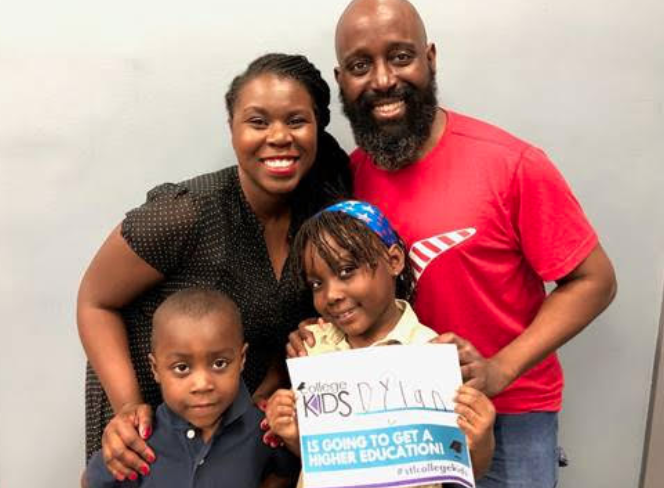How this US city is using revenue from parking tickets to fund college dreams
No one is ever happy about getting a parking ticket. But in St. Louis, Missouri, at least the fine you pay goes to a good cause: Helping kids to go to college.
The fees go toward the city’s College Kids Children’s Savings Account program, which was launched in 2015 to encourage and empower young people to save and go to college. Under the program, the city’s Treasury deposits $50 into an account for each of the approximately 2,800 incoming kindergartners each year. The accounts are later supplemented by city fees and by participating in learning incentive programs.
St. Louis Treasurer Tishaura Jones created the program to help address not only the student debt crisis but also the racial wealth gap in the city.
“I realized I had all this power and I’m like, well, you know what? I’m going to use my power for good and not evil,” Jones told Yahoo Finance.
How it works
The program is always evolving, Jones said. Since the fund’s inception, Jones has introduced matched savings, school attendance bonuses, and deposits for parents attending financial literacy courses, to name a few.
“Right now our oldest cohort is only in the fourth grade. So we're looking at how we can do some reading incentives, some reading benchmarks — the possibilities are endless,” she said.
The majority of funds — 82.2% — come from parking tickets and fines. Family contributions and donations make up the rest of the funding. The program has helped more 16,000 public school students start savings accounts, and the program in total now has more than $1.1 million in assets, held at 1st Financial Federal Credit Union in St. Louis.
Children receive contributions only when they enter post-secondary education. Funds can’t be accessed without approval from program administrators, and if a parent or child wants to withdraw money from the account before high school graduation, they’ll only have access to funds they contributed — and not those received from the city.

‘It’s a beautiful idea’
The genesis for the program came from those in other states, Jones explained.
“We had this old setup since the 1950s in that the treasurer is the parking supervisor, and I looked across the country to see what other treasurers did,” Jones said.
The program that most directly inspired Jones was implemented in California by San Francisco Treasurer José Cisneros. In 2011, Cisneros started Kindergarten to College, a program that creates a bank account for every kindergartener with a $50 deposit or $100 for children from low-income families. The city pays for administrative costs and initial deposits, but individuals and foundations contribute match donations.
Since then, many cities and states around the country, including Nevada and Pennsylvania, have implemented similar programs (albeit in various forms).
St. Louis resident Gloria Nolan (pictured above), who has two children — one in second grade and the other in kindergarten — is thrilled with the program so far.
“They're pouring money into these student accounts with revenue generated from parking tickets,” said Nolan. “So yes, you get a parking ticket and you're like, ‘Oh, I made a donation that's fine.’ It's a beautiful idea, right? Just a unique way of using this revenue. I think she's brilliant.”
‘This was the right thing to do’
But it wasn’t exactly a cakewalk for Jones to see her idea come to fruition.
“Yes, there was pushback. Some of my colleagues … thought that this was purely a political move,” said Jones. And they subsequently tried to stop funds from going towards running the program, she added.
“The first couple of years were pretty contentious. But you know, anything worth having is worth working hard for,” she said. “And I truly believe that this was the right thing to do because we need to give our children hope.”
Addressing the racial wealth gap
Jones believes that such programs could have far-reaching effects that go beyond obtaining a college education.
“I discovered while researching this program is that if we’d started these programs earlier, they’d have significant potential to reduce the racial wealth gap,” she said.
The widening of the racial wealth gap has become increasingly glaring, according to a 2019 study done by McKinsey & Company. The report’s findings show that the racial wealth gap between black and white families grew from $100,000 in 1992 to $154,000 in 2016. McKinsey & Company asserts that $1 trillion to 1.5 trillion could be added to the U.S. economy in the next eight years by closing the racial wealth gap that exists between black and white families.
According to Census data, St. Louis is almost evenly split white and black residents: 47.6% identify as white only, and 45.9% identify as black only.
Jones believes that helping to bridge the gap is just as important as helping students get a college education.
“A college degree is a tool for success but not the only one. Wealth accumulation is also a tool, and we need to give kids all the tools, not just some,” she said.
—
Aarthi Swaminathan and Reggie Wade are reporters for Yahoo Finance. Follow them on Twitter at @aarthiswami and @ReggieWade.
Read more:
U.S. teachers increasingly struggle to find affordable housing: Study
Presidential candidate Pete Buttigieg: ‘I have six-figure student debt’
Bernie Sanders unveils sweeping student debt cancellation plan
Read the latest financial and business news from Yahoo Finance
Follow Yahoo Finance on Twitter, Facebook, Instagram, Flipboard, SmartNews, LinkedIn, YouTube, and reddit.

 money
money 